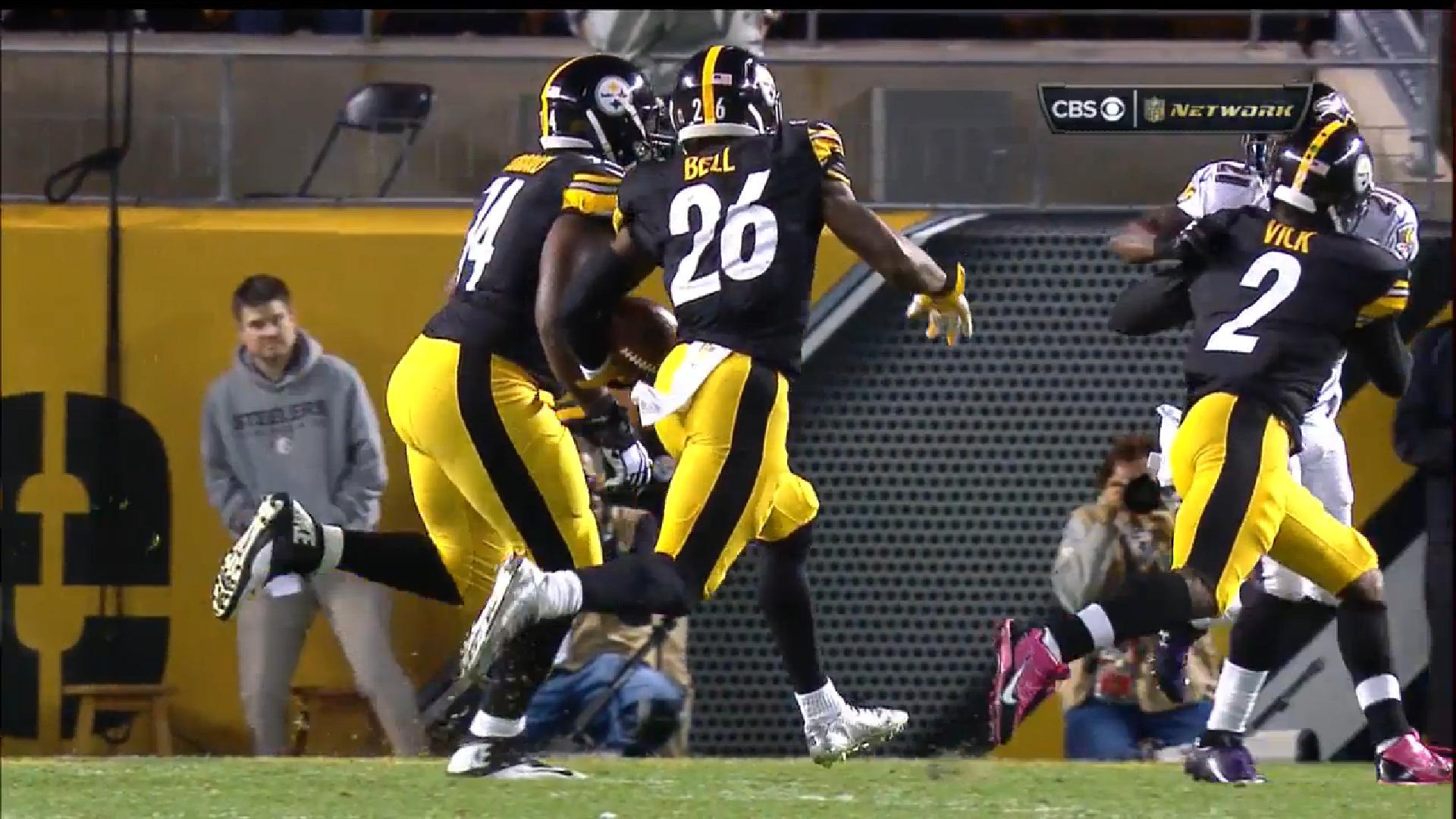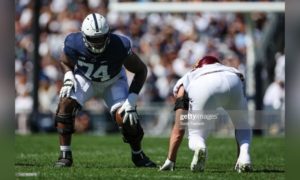Even though the Pittsburgh Steelers are fortunate to have at their disposal arguably the best—and certainly the most complete—backup running back in the league with DeAngelo Williams, who totaled almost 350 yards with three touchdowns over the course of the first three games, the return of Le’Veon Bell is still a big deal for this offense.
I’m not exactly going out on a limb in saying that, even though the fact that he has only played about five and a half games since December 2014 may make it difficult for some to recall just what sort of impact he can have on a game with his unique skill set.
Pro Football Focus took to the task of reminding people of that fact yesterday with an article in which writer Sam Monson argues that Bell is the best running back in the game. To be fair, I would not expect there to be much in the form of a rebuttal among the readership of this site on that point, but I wanted to share the article’s point of view all the same.
Monson begins by pointing out that Bell was their highest-graded running back of last season with an overall grade of 90.0, and was second in the least behind Marshawn Lynch in 2014 with a grade of 87.9 in their rankings, when he was a first-team All-Pro.
The statistic that is highlighted right off the bat is the fact that Bell led the league with 3.4 yards per carry after contact, which is highly impressive in and of itself, and goes a long way toward explaining why he was able to average almost five yards per carry all-told in 2015. In spite of the fact that he only participated in six games, he still managed to rack up 113 carries, which is a more than suitable body of work for analysis.
Monson draws upon the example of Adrian Peterson as a comparison to Bell, which is fitting, given that Peterson is inarguably the benchmark of pure ball-carriers of this generation. In spite of the fact that Peterson has been producing Hall-of-Fame-worthy rushing numbers, the article points out that his ineffectiveness in the passing game—including as a blocker—often resulted in him being on the sidelines in key situations for the Vikings.
You would never find that to be the case with Bell for the Steelers, who Monson writes lined him up along the line of scrimmage 29 times during his six games, and I expect that number to increase this year given that Ben Roethlisberger will be healthy.
He adds that since the start of the 2014 season, Bell has averaged about five receptions on six targets per game for nearly 50 yards. And he has surrendered just three pressures on 119 pass-blocking attempts in that span.
So much of what Bell brings to the table is a bit of an intangible quality that requires you to actually watch what he is doing to fully appreciate his talents. But sometimes it also helps to be able to put some numbers on the table as a supplement to the eye test, and Monson’s article helps achieve that.








